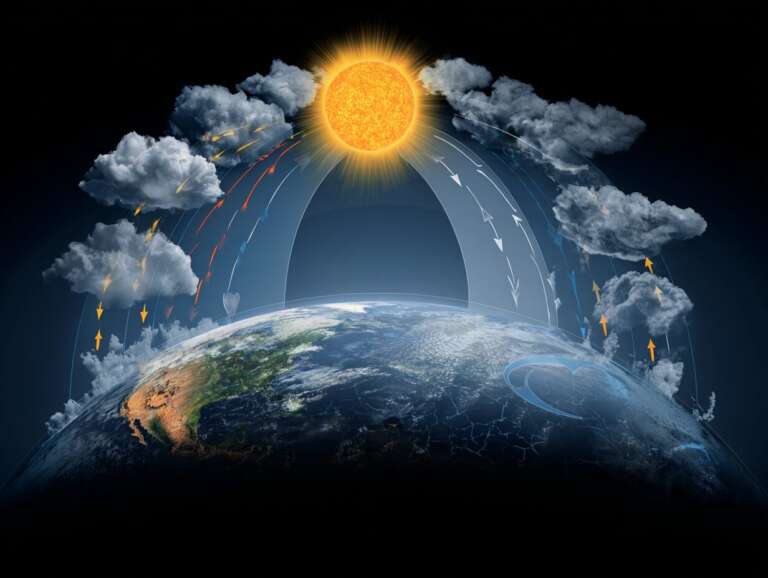Did you know that rising CO2 levels could be tipping the balance of entire forest ecosystems? It’s a staggering reality that demands our attention. Forests are not just picturesque landscapes; they are the lungs of our planet, vital carbon sinks, and irreplaceable habitats for countless species. As CO2 levels climb, the intricate web of life that thrives within these ecosystems faces unprecedented threats. Understanding the impact of CO2 on forests is crucial for preserving biodiversity and maintaining the health of our planet. If we don’t act now, we risk losing not just trees, but entire ecosystems that support life as we know it.
TL;DR: Increased CO2 levels are altering forest ecosystems, threatening biodiversity. Healthy forests are essential for combating climate change and supporting wildlife. Strategies for mitigating CO2 impacts can help restore ecosystem balance.
Understanding CO2 Levels and Forest Health
Here’s the brutal truth: CO2 levels have skyrocketed from about 280 parts per million (ppm) before the Industrial Revolution to over 410 ppm today. This dramatic increase isn’t just a number; it’s a catalyst for climate change that’s reshaping our forests. As CO2 traps heat in the atmosphere, it pushes ecosystems toward critical tipping points—thresholds beyond which recovery becomes nearly impossible.
Imagine a forest where the delicate balance of species is disrupted. Trees that once thrived under specific conditions may struggle to survive, leading to a cascade of ecological consequences. The concept of tipping points is crucial here; once a forest crosses these thresholds, it can shift from a carbon sink to a carbon source, exacerbating climate change. The CO2 impact on forests is not just about trees; it’s about the entire ecosystem health that hinges on these vital habitats.
The Role of Forests in Biodiversity Protection
Forests are biodiversity hotspots, housing over 80% of terrestrial species. From the smallest insects to majestic mammals, countless organisms depend on these ecosystems for survival. The interdependence of species within forests creates a complex network that supports life. When CO2 levels rise, this network is threatened.
Take the case of the Amazon rainforest, often referred to as the “lungs of the Earth.” Increased CO2 leads to changes in species composition, favoring fast-growing species at the expense of slower-growing, more diverse ones. This shift not only diminishes biodiversity but also weakens ecosystem resilience. When biodiversity declines, forests become more vulnerable to pests and diseases, further destabilizing the ecosystem. The reality is stark: protecting biodiversity is essential for maintaining ecosystem health, and rising CO2 levels are a direct threat to this balance.
How CO2 Affects Tree Growth and Health
You won’t believe this, but increased CO2 can actually alter the very fabric of forest ecosystems. While higher CO2 levels can initially boost tree growth, the long-term effects are far more complex. Trees may grow faster, but they often become weaker and more susceptible to disease. This phenomenon is known as “CO2 fertilization,” and it’s a double-edged sword.
Consider the case of the eastern United States, where studies show that elevated CO2 levels have led to a shift in tree species composition. Fast-growing species like black cherry are thriving, while slower-growing, more ecologically important species are declining. This shift can fundamentally change forest structure and function, impacting everything from wildlife habitats to carbon storage capabilities. The CO2 impact on forests isn’t just about growth rates; it’s about the health and stability of entire ecosystems.
The Consequences of Biodiversity Loss in Forests
The implications of biodiversity loss in forests are staggering. When species disappear, the ecological consequences ripple through the entire ecosystem. Imagine a forest where pollinators like bees and butterflies vanish; the plants that rely on them for reproduction would struggle to survive. This scenario isn’t hypothetical—it’s happening right now.
Research has shown that biodiversity loss can lead to increased pest outbreaks and disease spread in stressed ecosystems. For instance, the decline of certain tree species can create openings for invasive pests, which thrive in weakened environments. This not only threatens the health of the forest but also accelerates climate change effects, as less diverse forests are less capable of sequestering carbon. The connection between biodiversity and ecosystem health is undeniable, and the loss of one can spell disaster for the other.
Mitigation Strategies for Protecting Forest Ecosystems
So, what can we do about this looming crisis? The answer lies in actionable strategies that target the root causes of CO2 emissions and promote forest health. Here’s what you need to know: reforestation and afforestation are powerful tools for enhancing biodiversity and combating climate change. By restoring degraded lands and planting new forests, we can create habitats that support diverse species and improve ecosystem resilience.
Community and policy initiatives play a crucial role in forest preservation. Programs that promote sustainable forestry practices, protect existing forests, and engage local communities in conservation efforts are essential. For example, the Bonn Challenge aims to restore 150 million hectares of deforested and degraded land by 2020, demonstrating the global commitment to forest restoration. The CO2 impact on forests can be mitigated through collective action, and every effort counts.
Conclusion
The connection between CO2 levels, forest health, and biodiversity is clear and urgent. As we face rising CO2 levels and the potential for catastrophic ecosystem changes, it’s imperative that we act to protect our forests. Supporting conservation efforts and being mindful of our carbon footprint can make a significant difference.
Now, more than ever, we must prioritize forest preservation and advocate for policies that protect these vital ecosystems. What steps will you take to contribute to forest conservation? Share your thoughts in the comments below, and let’s explore together how we can safeguard our planet’s biodiversity for future generations.

